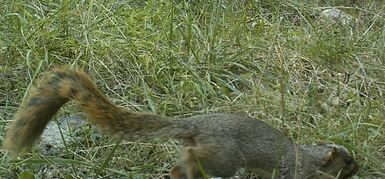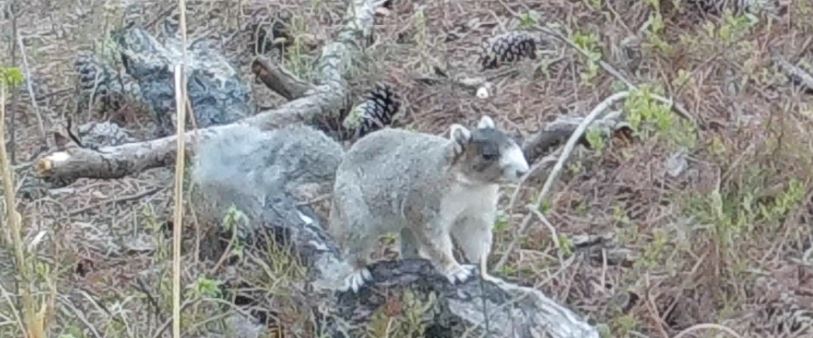 Counties of focus for the southeastern fox squirrel. Map contributed by Marissa Guill.
Counties of focus for the southeastern fox squirrel. Map contributed by Marissa Guill.
The fox squirrel (Sciurus niger) is the largest species of tree squirrel native to the United States. In Virginia, fox squirrel populations are still present in the Delmarva Peninsula and west of the Piedmont into the Appalachians. However east of the Appalachians, particularly in the lower Piedmont and Coastal Plain, fox squirrels are rare and patchily distributed, especially the southeastern subspecies Sciurus niger niger, or the southeastern fox squirrel. Regionally, formerly suitable habitat has been subjected to fragmentation and degradation of mixed pine-hardwood forests and bottomland hardwoods by conversion to agriculture and plantation forestry, as well as decades of fire suppression. At this moment, the southeastern fox squirrel holds an unknown distributional status in Virginia which could ultimately impact future management efforts.
Our goal is to better understand the distribution of fox squirrels in Virginia to reveal important habitat requirements and ecological specialization. We are currently seeking out volunteers and citizen scientists to help us collect sightings of fox squirrels across Virginia. We are specifically seeking observations from counties east of the Blue Ridge mountains, south of interstate 64, north of the North Carolina state line, and all the way east to the coast of Virginia (not including the Delmarva peninsula). Although this is our focus area, we are further trying to identify the overlap or separation of ranges between the eastern fox squirrel (Sciurus niger vulpinus, commonly found in the Blue Ridge), versus the southeastern fox squirrel. Therefore, any observations of fox squirrels in Virginia proves beneficial.
 A southeastern fox squirrel captured on a trail camera. Photo by Marissa Guill.
A southeastern fox squirrel captured on a trail camera. Photo by Marissa Guill.
If you have recently seen a fox squirrel or if you would like more information, you can visit our study website at: http://cmi.vt.edu/FoxSquirrel.html. If you would like to send us an observation you can email us at foxsquirrelreport@vt.edu with the date, location, and picture or access our iNaturalist project site at https://www.inaturalist.org/projects/fox-squirrels-sciurus-niger-in-southeastern-virginia-usa. You can also use our email stated above for any further questions about the project and fox squirrels. Thanks for your help Master Naturalists!

